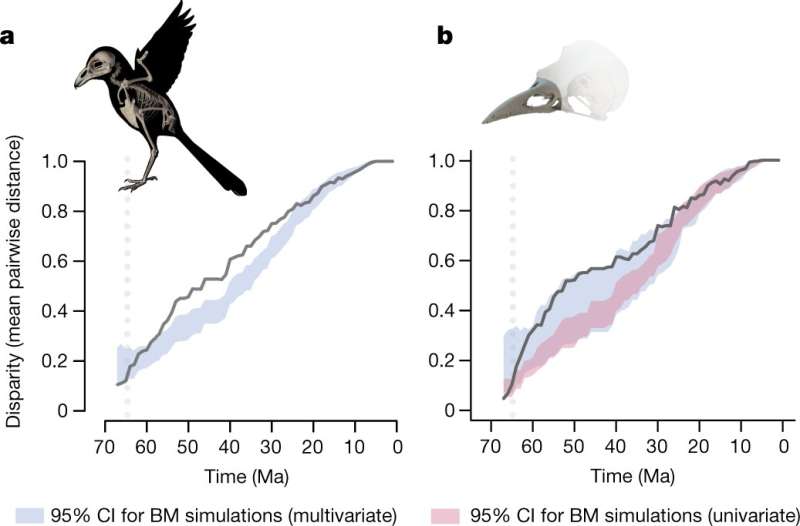October 27, 2022 report
Whole body 3D images of avian skeletons highlight the role of ecology in evolution

A team of researchers, one with the University of Cambridge, the other three with the University of Oxford, has used whole-body 3D imaging technology to learn more about the evolutionary history of birds. Their paper is published in the journal Nature.
When a large asteroid crashed into the Earth at Chicxulub in Mexico approximately 66 million years ago, a massive extinction, the Cretaceous-Tertiary Mass Extinction (K-T event), followed for both land and sea creatures. The K-T event, prior research has shown, led to the extinction of all of the dinosaurs except for some that could fly—birds. In this new effort, the researchers have taken a new look at the ecological development of birds since the K-T event, using the new approach of whole-body 3D imaging.
As the researchers note, most studies looking at the evolution of birds have focused on a single body part, such as the legs or wings. In this new effort, they sought to learn more by expanding their view. They conducted whole-body 3D scanning on over 200 species to create virtual skeletons that could be used for phylogenetic comparative purposes.
By comparing the skeletons, the researchers were able to learn more about the factors that led to the differences between them. They found that the greatest single difference between the birds was based on whether they were land- or sea-based. Land birds, they noted, had evolved in ways that led to increases in leg versatility. Sea birds, on the other hand, saw far more changes to their wings.
The researchers also compared the virtual skeletons to the few ancient bird fossils that have been found; they also used evidence obtained in prior genome studies to better understand the evolutionary history of birds in general. They found that they were able to see more clearly where different types of birds diverged and the reasons for such events. They conclude that ecology played a major role in the development of the anatomical features seen in virtually all modern birds.
More information: Guillermo Navalón et al, Environmental signal in the evolutionary diversification of bird skeletons, Nature (2022). DOI: 10.1038/s41586-022-05372-y
Journal information: Nature
© 2022 Science X Network



















